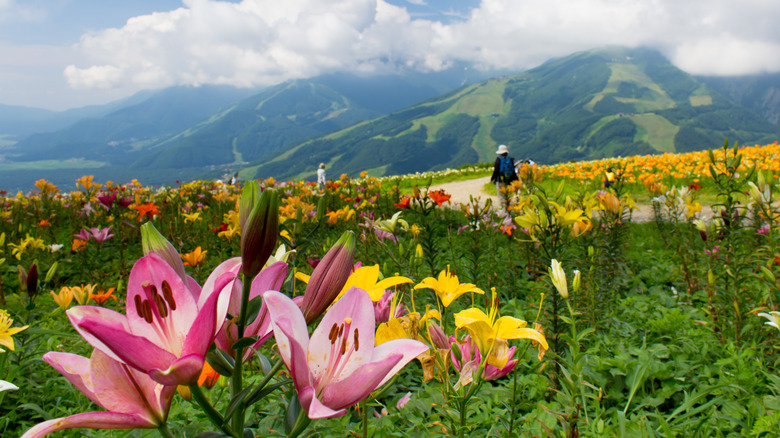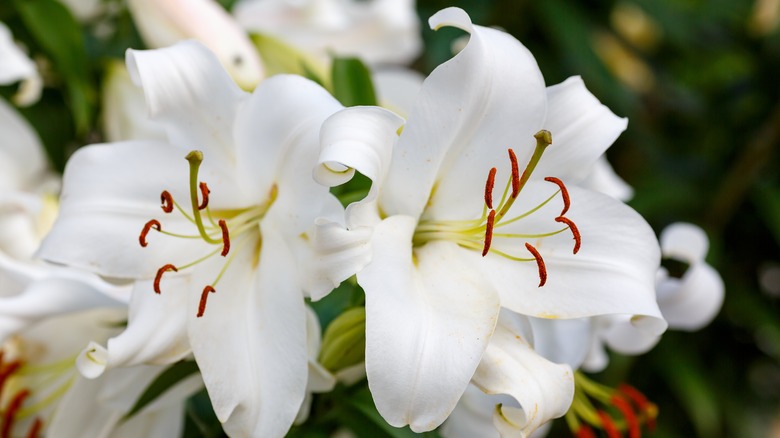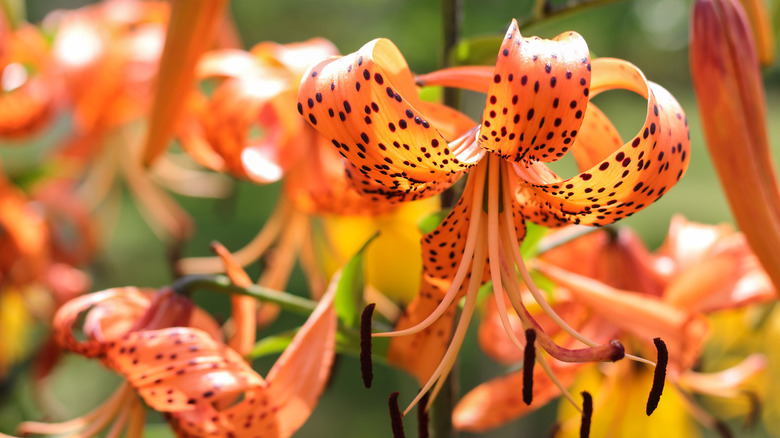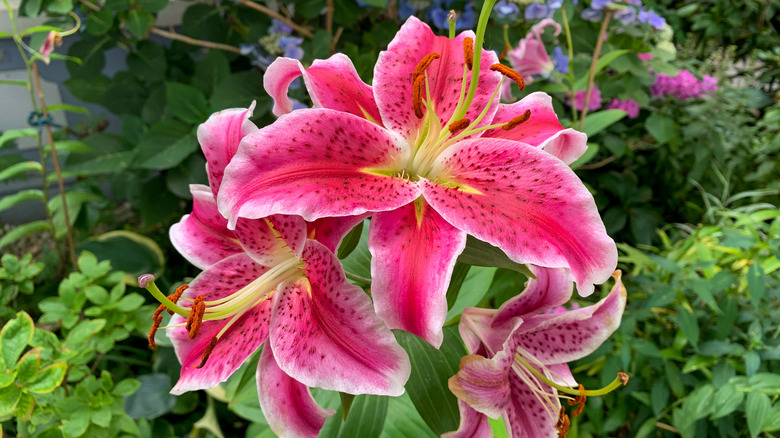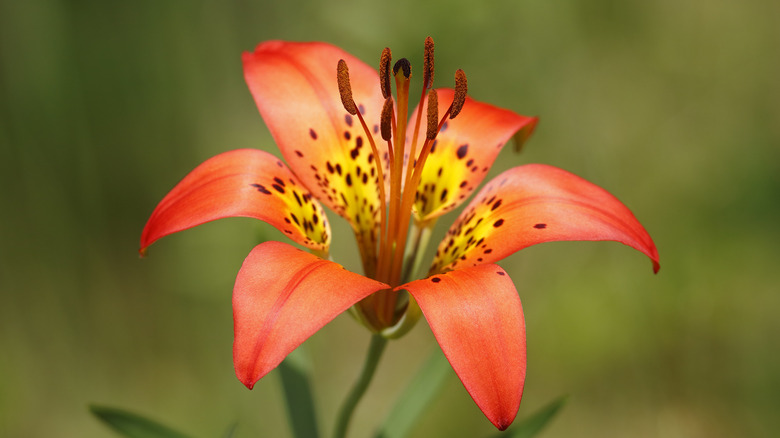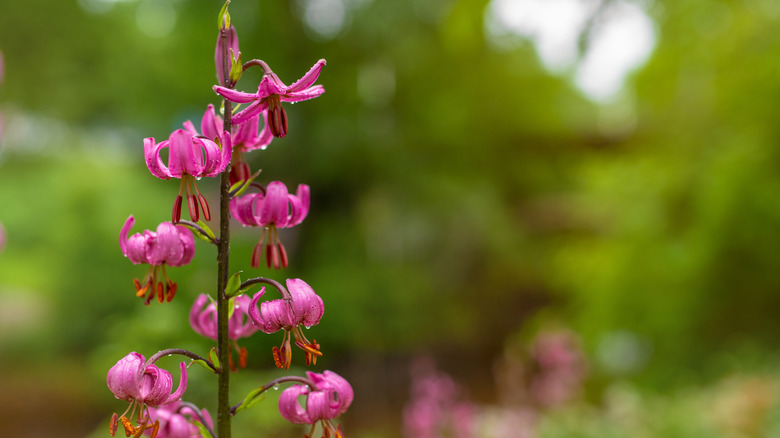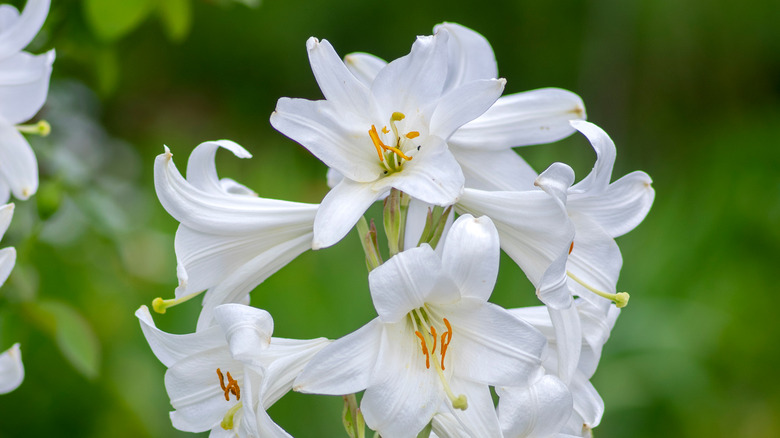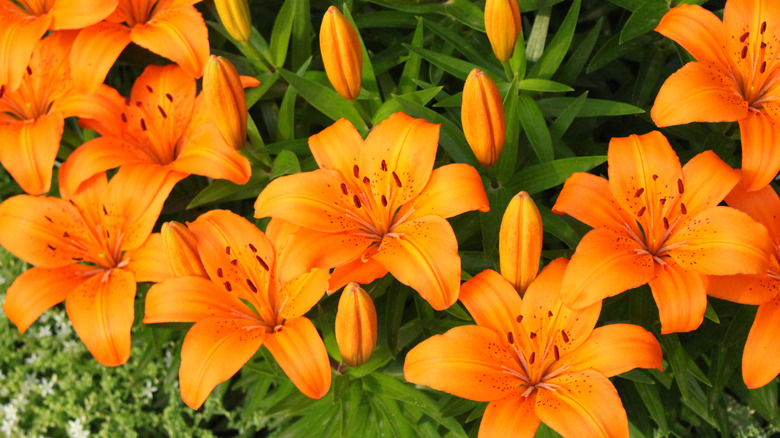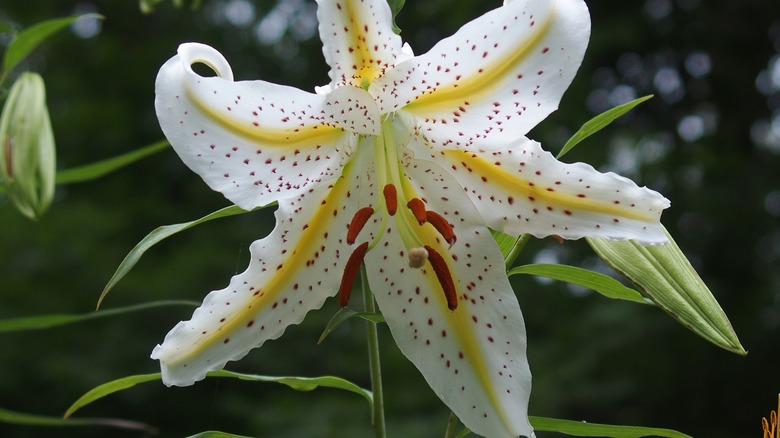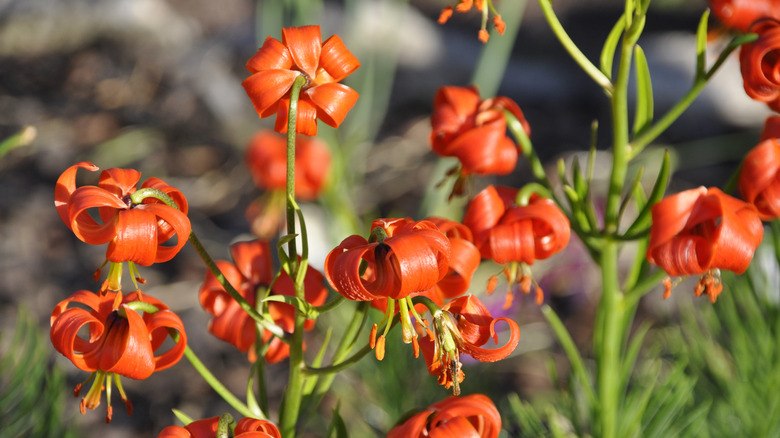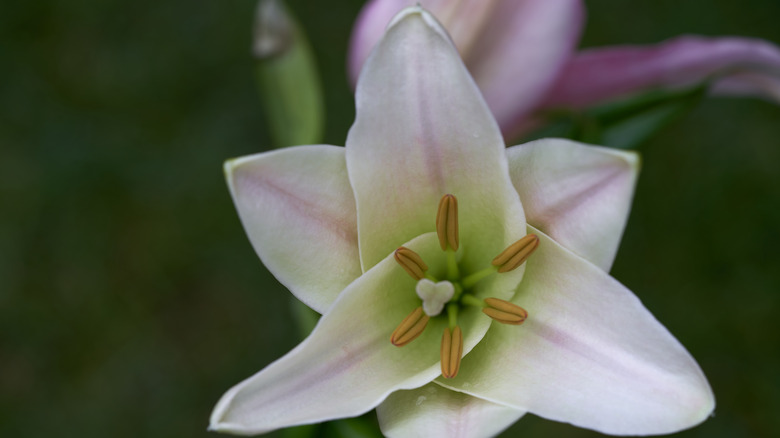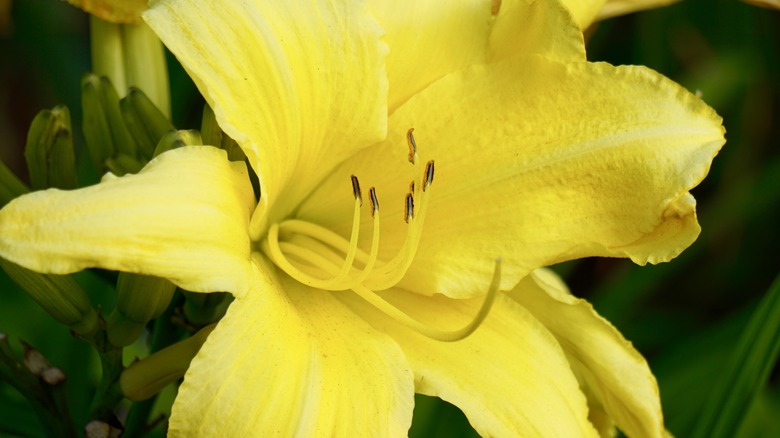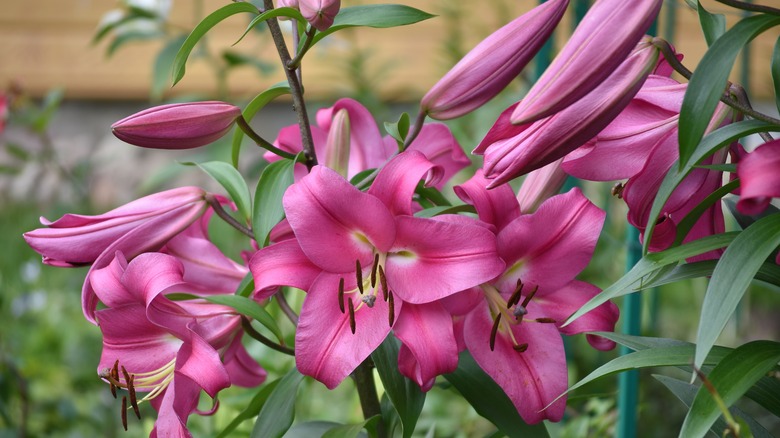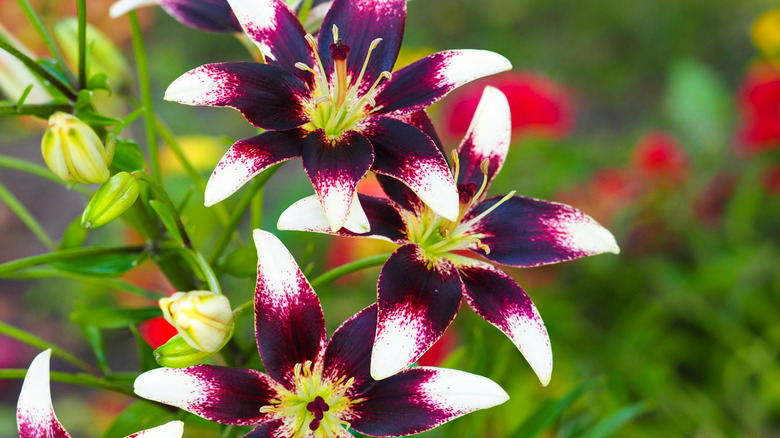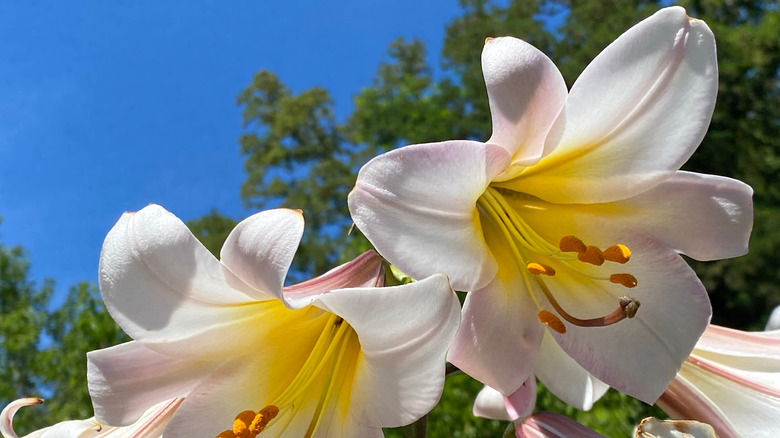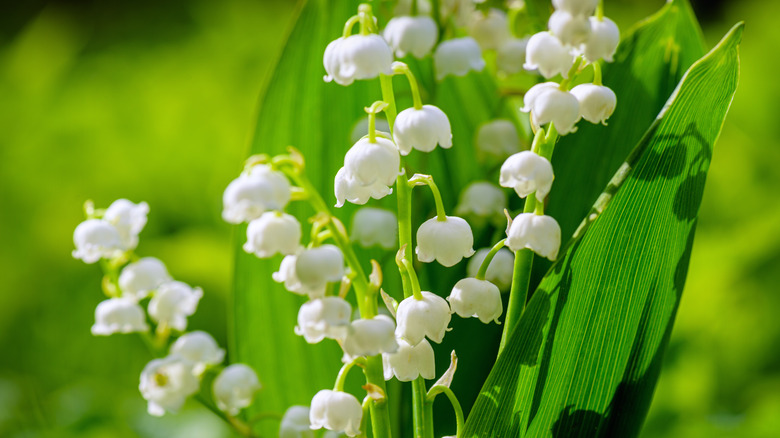15 Dazzling Lilies That Will Bring Color To Your Garden
Lilies are beautiful star-shaped flowers that bring fragrance and beauty to any summer garden. They come in various colors and types and can bring a burst of color to your entire garden. They also grow well in tubs or borders. According to Almanac, lilies grow from early summer to autumn, and if you plan your garden and use the correct varieties, you can have guaranteed color throughout that time. To ensure color throughout the growing season, plant Asiatics first, which bloom in May-June, then Orienpets, and lastly, blooming in mid to late summer, Oriental.
Lilies require lots of sunlight, and if you want to be able to depend on your blooms, you must ensure they get between six and eight hours of sun a day. They also prefer soil that is neutral or acidic and well-draining.
You can pick colors to suit a particular theme or choose lots of different varieties and have a bright, colorful garden. Here are 15 beautiful lilies to choose from.
White oriental lily
White oriental lilies (Lilium 'casa blanca') originated from Korea and Japan. These dazzling bright white lilies are fragrant and elegant. Flower Magazine says the bulbs need planting about 6 inches deep in well-draining soil, and with support, they typically grow to about 4 feet. If grown in a hot climate, partial shade in the afternoon is a must. They bloom in summer, and the USDA zones are 4 to 8. In zone 4 and 5, these lilies should be planted in springtime.
Tiger lily
Tiger lily flowers (Lilium lancifolium) are orange with black flecks and grow multiple blooms at the top of a single stem. This variety can benefit from cane support, as they can grow up to 3 feet in height.
Michigan Bulb Co. says that they prefer well-drained soil but can tolerate heavier soils. If you don't seem to have much well-drained soil in your garden, you can mix the soil with sand or staw, which will improve its draining ability. They like full sun and grow well in USDA zones 3 to 9.
Stargazer lily
This stunning lily is known as a stargazer (Lilium orientalis). It is a hybrid oriental lily, and it grows up to 4 feet tall. The large blooms are highly colorful and eye-catching, with a bright pink stripe down the middle of each petal.
Plant Care Today suggests that full sun is best, as is well-draining acidic soil. Try to ensure the soil doesn't dry out but retains some moisture. They bloom in the later part of summer and do best in USDA zones 3 to 8.
Wood lily
The wood lily (Lilium philadelphicum) is native to North America. This variety is orangey red and has deep purple spots close to the center.
Lady Bird Johnson Wildlife Center says that wood lilies grow up to 3 feet tall and have a flurry of flowers a the top of a single stem. Bury the bulbs three times the depth of the bulb itself in well-draining soil in a sunny area of your garden. They grow best in USDA zones 4 to 8 and bloom in late spring to early summertime.
Martagon lily
The martagon lily (Lilium martagon), or Turk's-cap lily, is a flower that needs very little care and will flower year after year if planted correctly, says Nature & Garden. They note that before you cut back the flower for the winter, you must ensure that the blooms have completely died and dried up.
These lilies like well-drained but moist soil and grow up to 3 feet in height. They flower until September and thrive in USDA zones 3 to 9.
Madonna lily
Madonna lilies (Lilium candidum) have dark green foliage with pure white trumpet-shaped flowers. They grow to just under 6 feet in height, and they have a lovely floral scent, according to The Royal Horticultural Society.
They like loamy or chalky neutral soil that is well draining while still moist. They like full sun in a sheltered spot and can get up to 20 blooms on a single stem, which makes for a beautiful bouquet when displayed in a vase, says Funny How Flowers Do That. They do best in USDA zones 5 through 9.
Orange lily
Although similar to the tiger lily, the orange lily (Lilium bulbiferum) is a totally different flower, says Maine Garden Ideas. One of the differences between the two flowers is that orange lilies open for only a single day. As the petals shrivel up and drop off the plant, another bud opens to take its place.
They like full sun and try to keep the soil level so water doesn't collect, as this excess moisture could rot the bulbs. The USDA zones are 8 through 10 and they grow 3 to 4 feet tall.
Golden-rayed lily
The golden-rayed lily (Lilium auratum) is native to Japan and has a spicy-sweet fragrance. Shoot states that the flowers are very large, bright white, with a vibrant golden yellow band down the center of each petal and adorned with crimson spots.
They grow to a height of 5 feet and like full sun in a sheltered spot and loamy, sandy, acidic soil that is moist but well-draining. The USDA zones are 6 to 9.
Turban lily
The turban lily (Lilium pomponium) is a vibrant sunset red flower that must be grown in full sun. According to Rare Plants, these blooms prefer very well-draining soil, and they suggest adding a handful of limestone gravel into your soil to ensure this.
They grow up to about 2.5 feet and are probably suited to more advanced gardeners since they're more high maintenance than other varieties. The USDA zones are 4 to 8.
Bamboo lily
This flower, the bamboo lily (Lilium japonicum), is native to Japan. Although it prefers full sun, it will tolerate partial shade, and it can also tolerate more moisture than other lily varieties, says Plants For A Future.
This elegant flower has beautiful pale pink petals and bright red anthers. It is highly fragrant and can grow up to a meter tall. The USDA zones are 4 to 8.
Connecticut king lily
The Connecticut king lily (Lilium 'Connecticut king') is a striking yellow flower with dark green leafy foliage, according to Shoot. They grow to a height of 3 feet, and the bulb should be planted at a depth of three times its height.
It prefers moist, loamy, well-draining soil of any PH level. Ideally, plant in full sun. These blooms benefit from being deadheaded regularly. The USDA zones are 4 to 8.
Denia pixie lily
Pixie lilies (Lilium x hybrid asiatica) are a smaller variety and grow best in pots, hanging baskets, or window boxes. They only reach a height of 12 to 18 inches, according to Pick Ontario. They are easily grown and come in four colors — pink, red, orange, and yellow.
These flowers prefer moist, well-draining soil, so be sure to put drainage holes in any container you use. They will fare best when placed where the foliage and blooms are in full sun, but the soil and roots are kept shaded. The USDA zones are 4 to 8.
Netty's pride lily
The Netty's pride lily (Lilium 'Netty's pride') has striking, vibrant blooms. According to Shoot, the foliage is dark green, and the petals are a deep purple with bright white tips. It reaches a height of 2.5 feet and prefers loamy, chalky, well-draining, but moist soil of any PH level.
Place in sheltered areas in full sun and keep the roots from water-logging to prevent bulb rot. The USDA zones are 5 to 9.
Royal lily
The royal lily (Lilium regale) has very large trumpet-type blooms with white petals and a yellow center, bright pink buds, and green lush foliage with a strong fragrance that is particularly noticeable in the evening, according to Flowers of India.
They like full sun, but in very hot climates prefer partial shade. Well-draining, loamy soil is a must, and as each year passes, this variety becomes increasingly floriferous, eventually boasting up to 20 flowers on a single stem. They can grow up to 6 feet and do best in USDA zones are 3 to 8.
Lily of the valley
The lily of the valley (Convallaria majalis) is not technically a true lily, but its creamy shower of sweetly scented, delicate bells makes it a must in any garden. At the height of 10 inches, it is low growing, mat-forming, and has excellent ground coverage.
It prefers shady areas with moist soil of any PH level. The Royal Horticultural Society warns that it is very toxic and is best handled using gloves and never to be ingested. The USDA zones are 3 to 9.
